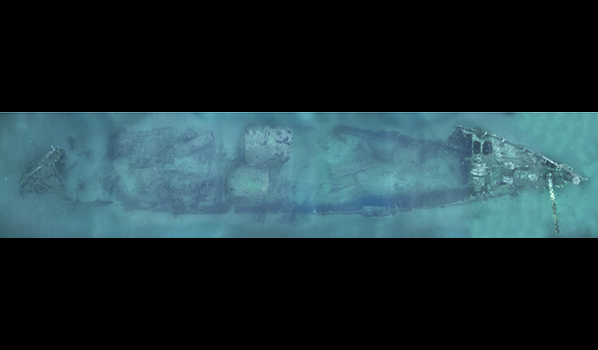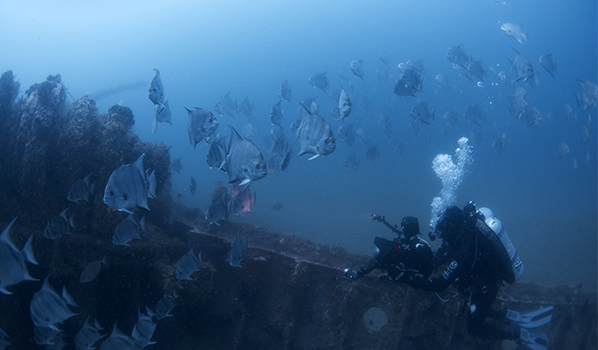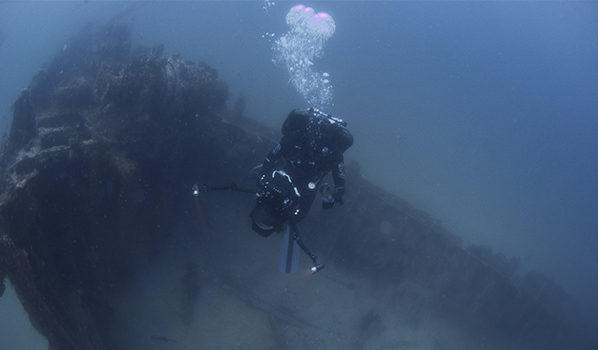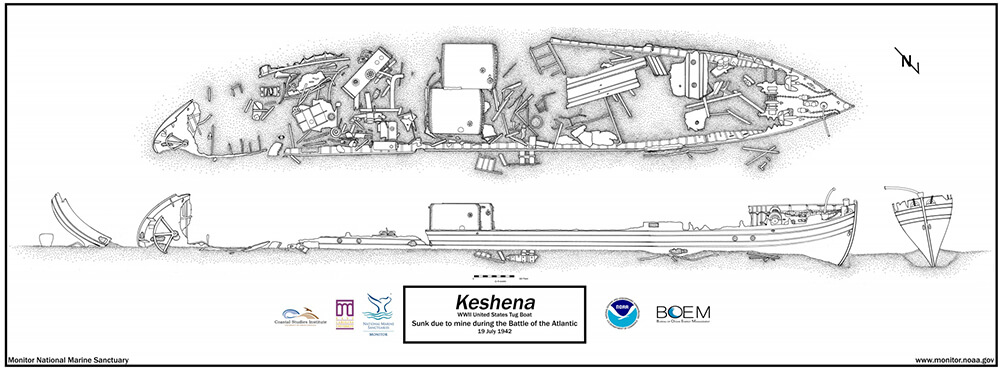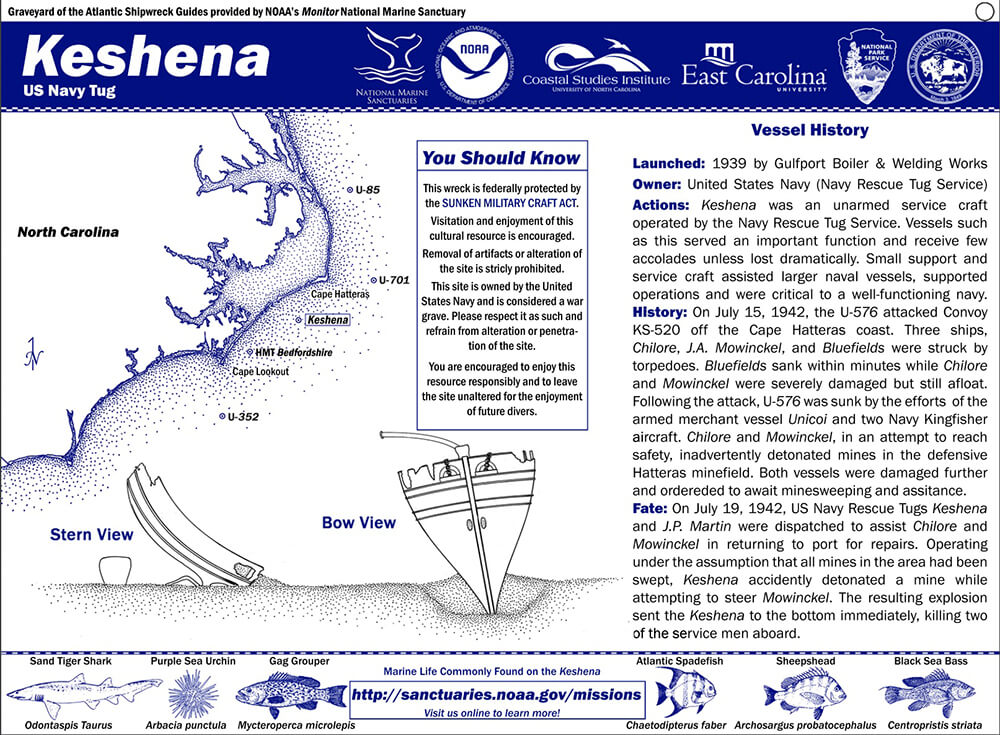Keshena
Ship Stats
Depth: 85 feet
Vessel Type: U.S. Navy tug
Length: 142 feet Breadth: 27.5 feet
Gross Tonnage: 427 Cargo: N/A
Built: 1919, Whitney Brothers Company, Superior, Wisconsin, USA
Hull Number: Unknown Port of Registry: Philadelphia, Pennsylvania, USA
Owner: United States Navy
Lloyd's Register Details: Steel hull, one deck, triple expansion three cylinder engine
Former Names: N/A
Date Lost: July 19, 1942
Sunk By: A sea mine Survivors: 15 of 17 survived (2 dead)
Data Collected on Site: Still and video photography; photomosaics; site plan
Significance: Casualty of World War II's Battle of the Atlantic
Wreck Site
At a depth of 85 feet, a majority of the wreck of Keshena is contiguous and can easily be circled several times during a single dive. The bow sits upright with a slight tilt, but with many features still evident, such as a windlass and anchor. The two boilers are offset amidships and stand close to the highest relief of the site. The fantail stern is intact, although twisted to the starboard side. The steering quadrant and rudder are also still intact.
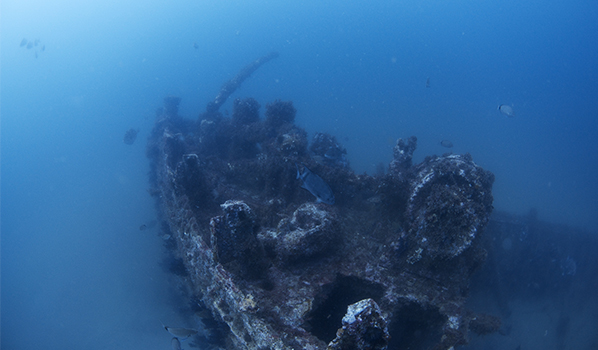
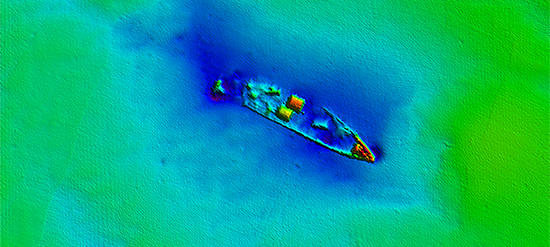
Historical Background
The ocean going tug, Keshena , was one of nine similar tugs produced in 1919. The vessel measured over 140 feet in length and was designed in the style of an older tug with a small pilot house located on the forward quarter of the deck. Although Keshena was unarmed, it was still requisitioned from public service for military action during World War II and became part of the Naval Rescue Tug Service.
On July 15, 1942, a merchant convoy (KS-520) consisting of 19 merchant ships and five military escorts was attacked south of Cape Hatteras, North Carolina. Three merchant ships, Bluefields, Chilore, and J.A. Mowinckel, were torpedoed by U-576. Two escaped with severe damage, while the third, Bluefields, sank in a matter of minutes. Nearly thirty men were injured during the attacks, one of which would later die from his wounds. In the ensuing pursuit, a coordinated attack between aircraft and armed escort and merchant vessels resulted in the sinking of the U-boat, with all hands lost. In the hours that followed, a series of miscommunications resulted in the damaged merchant ships mistakenly navigating into the Cape Hatteras minefield. They would be severely damaged yet again.
The two merchant vessels, Chilore and J.A. Mowinckel, inadvertently detonated mines while attempting to reach port following the attack by U-576. After striking the mines, both vessels were abandoned and left afloat within the minefield. Over the next couple of days, several channels were swept so that tugs could reach the damaged merchant vessels and tow them to port. On July 19, Keshena was one of two tugs dispatched to tow the merchant vessels out of the mine field. Keshena moved out of the safe channel through the minefield and struck a mine. The tug sank within ten minutes. Although 14 males and one female were rescued, two members of Keshena's crew were killed in the accident. Eventually, the remaining tug removed Chilore and Mowinckel from the minefield successfully.
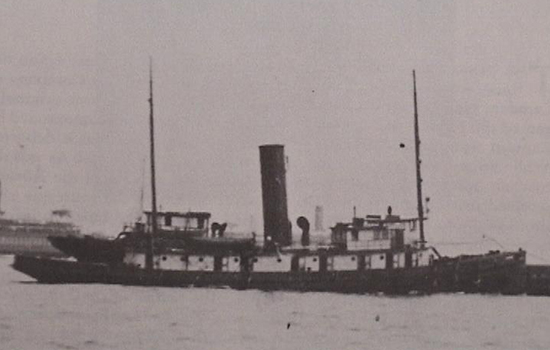
Photomosaics


Site Plan
Final archaeological site plan of Keshena. Click here for a larger PDF image. Photo: NOAA
To view additional site plans click here.


